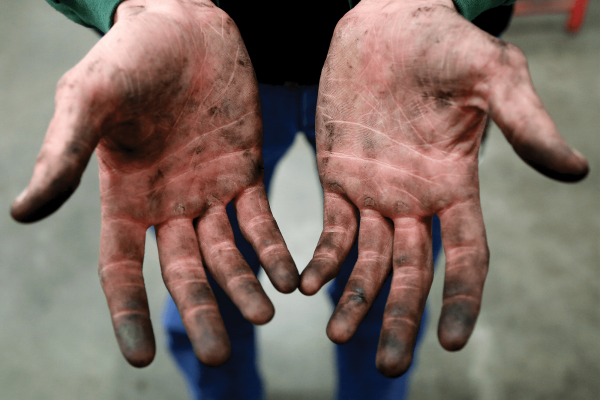DONALD TRUMP'S VICTORY came mostly from non-college-educated whites in the Appalachian parts of Pennsylvania and Ohio and the deindustrialized Rust Belt regions of Michigan and Wisconsin, including many areas that had voted twice for Barack Obama. As this realization dawned, many affluent, educated, bicoastal liberals began to ask: What’s the matter with our white working class? J.D. Vance, who wrote Hillbilly Elegy: A Memoir of a Family and a Culture in Crisis (2016) and grew up in the Rust Belt, in a family still moored to Appalachian Kentucky, turned out to be just the guy to tell the neoliberal elite what it wanted to hear.
Sure America’s industrial economy went to hell in the past four decades, he acknowledged. But Vance said his people haven’t pulled out of that slump because of what he called “hillbilly culture”—which, in his telling, seems to consist mostly of drug and alcohol abuse, hair-trigger violence, and a debilitating tendency to blame others for one’s problems (i.e. the government, coal or steel companies, Obama, etc.). This, of course, is in stark contrast to what Vance did with his own impoverished circumstances: joined the Marines, went to college and law school, and became a Silicon Valley venture capitalist.
Now, Trump is campaigning again, and Vance is back, too, with the pending release of a Hillbilly Elegy movie directed by Ron Howard. In the interim, a steady stream of other books have appeared, offering more systematic reflections on how some in the white working class became angry enough to give us Trump.
White Working Class: Overcoming Class Cluelessness in America , by Joan C. Williams (2017), was one of the first and, given its limitations, best of the books. Williams confesses to her membership in what she calls the Professional-Managerial Elite (PME). But she’s married to a man from working-class origins, a “class migrant,” she calls him, and that’s helped her see the “cluelessness” of her peers. Williams’ message is simple: “When you leave the two-thirds of Americans without college degrees out of your vision of the good life, they notice.”
Each of Williams’ chapters sets out to answer a clueless PME query, such as “Why Doesn’t the Working Class Just Move to Where the Jobs Are?” or “Is the Working Class Just Racist?” She carefully explains how attitudes that appear irrational to the PME make sense. For instance, working-class people don’t move because, for them, family and community have always been more reliable sources of security than any job. And, yes, many white working-class people are racist, but so are many elites, just in different ways. White working-class people understandably resent being preached at by them.
But Williams persists in the fantasy that retraining vouchers will fix the inequities brought by “free trade,” and suggests no concessions from the PME side on issues such as abortion, except to frame the liberal argument more politely. Still, her explanation of the working-class worldview has been revelatory for many readers.
Justin Gest’s The White Working Class: What Everyone Needs to Know (2018) covers similar ground as Williams’ text and often draws the same conclusions, but it’s rooted in Gest’s ethnographic study of two working-class communities and bolstered by census data, opinion surveys, and economic studies. But when he draws conclusions, Gest, too, is trapped in the neoliberal consensus. Wholesale redistribution of wealth and power is not an option; instead, the working class needs more education, which will not only equip them for “new economy” jobs but also socialize them into PME culture.
Tex Sample, author of Working Class Rage: A Field Guide to White Anger and Pain (2018), will have no truck with that. Sample, a Methodist minister and seminary professor, is a class migrant who never assimilated. He shows readers that working-class people have been robbed in the global economy of recent decades, under both U.S. political parties, and are right to be angry. Sample mainly wants his primary audience of church activists and professionals to both see the radical, system-shaking, kingdom-building potential of white working-class people and help the white working class in perceiving its commonalities with black and brown peers.
The most effective antidote to the Hillbilly Elegy syndrome is Heartland: A Memoir of Working Hard and Being Broke in the Richest Country on Earth, by Sarah Smarsh (2018). A class migrant in Vance’s age range, Smarsh is from the Kansas plains instead of Appalachia, but her family story has plenty of working-class violence, drunkenness, and dysfunction. Still, Smarsh never loses sight of the larger forces that kept her people “broke.” It wasn’t her grandfather’s personal failings that took away the family farm: It was a corporate agriculture policy that told farmers to get big or get out. Neither was it her father’s fault that his home-building business failed in 2007. That happened 1,600 miles away, on Wall Street.
It should be little wonder that, with no one else acknowledging that something was wrong, many fell for a phony populist who pushed their buttons on race. Anyone who wants this anger to go in a more positive direction (i.e. toward Wall Street and corporate America) needs to learn how white working-class people see themselves and the world. These books can start that process.

Got something to say about what you're reading? We value your feedback!







